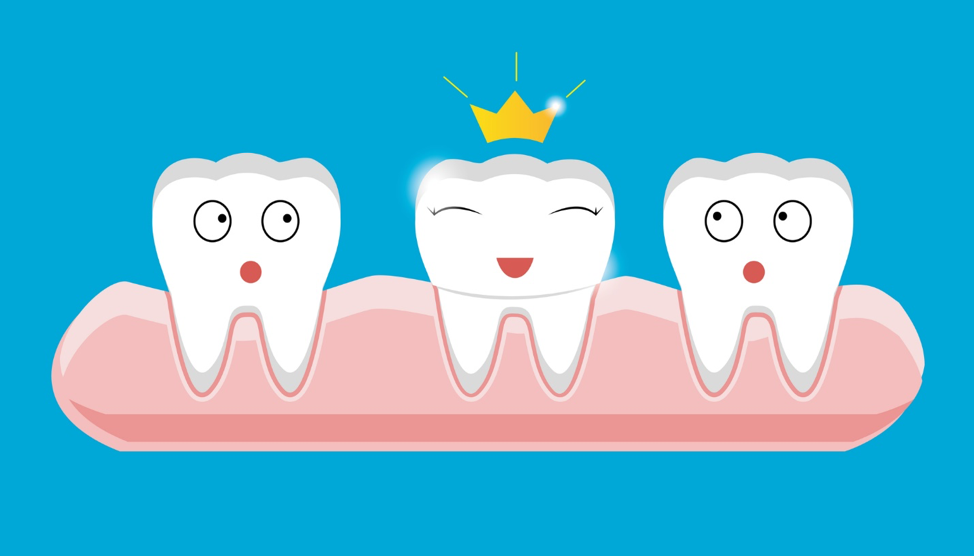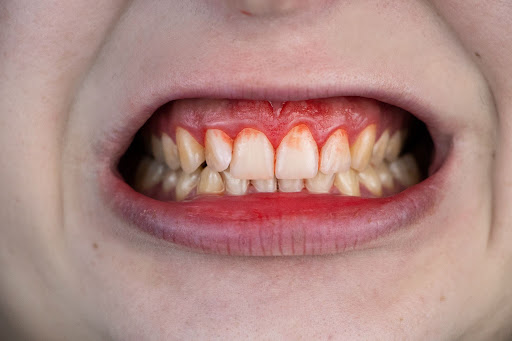
Which type of dental crown is the best?
September 10, 2021
5 Reasons to Use a CPAP Alternative for Sleep Apnea Treatment
September 24, 2021Gum disease is a sneaky yet destructive infection. People usually don’t notice this “silent” disease until it’s too late to reverse. Healthy gums are a vital component of wellness, but their importance is often overlooked.
Nearly half of the American adult population is battling gum disease, but how do dentists treat it? Is periodontal disease treatment painful? In-depth, we describe the four stages of gum disease and how dentists treat each one.
1. Gingivitis
Consistent oral hygiene, regular dental visits, and managing systemic diseases averts the development of gum disease. While prevention is the most effective method of tackling gum disease, early intervention is key to turning it around. Gingivitis is a reversible gum infection marked by gums that are:
- Puffy
- Dark or dusky red
- Receding
- Bleeding
- Tender
If you notice any signs of gingivitis, book an appointment with the dentist right away. A dental hygienist can stop the symptoms of early gum infection with a professional dental cleaning. By seeking care immediately, your chances of reversing the damage of gum infections and preventing it from advancing to periodontitis increase.
2. Slight Periodontitis
Though prevalent, periodontitis is preventable. It is also destructive and irreversible. In addition to the signs of gingivitis, people with slight periodontitis may also experience:
- Persistent bad breath
- Probing depths between four and five millimeters
- Tiny gum pockets filled with disease-causing bacteria
When slight periodontitis develops, everyday oral hygiene routines are not enough to treat it. Dentists use scaling and root planing to eliminate plaque and tartar along the gum line and gently polish coarse enamel. Patients may experience mild discomfort during scaling and root planing, but considerable pain during or after treatment is unusual.
3. Moderate Periodontitis
Though it may go unnoticed, patients suffering from moderate periodontitis have between six to seven millimeters of probing depths, which allows more bacteria to attack not only gum tissue but also bones, the bloodstream, and the immune system.
At the moderate stage of periodontitis, dentists often recommend scaling and root planing as a first step. Out of necessity, they may recommend laser pocket decontamination. This proven, non-surgical procedure harnesses the power of laser beams to eradicate aggressive bacteria from cavernous periodontal pockets with a quick recovery time.
4. Advanced Periodontitis
In the final stage of periodontitis, the previously developed symptoms worsen and become more pronounced. The gums can look swollen, red, recede, and ooze pus. Patients may feel embarrassed by severe bad breath or feel pain when chewing. The teeth may be sensitive to cold, loosen, and in the worst-case scenario, fall out.
Treatment for the fourth stage of gum disease include:
- Scaling and root planing
- Laser pocket decontamination
- Laser gum surgery
Do you need periodontal disease treatment?
Is your breath worse than usual? Do your gums bleed easily after brushing or flossing? Healthy gums are firm, pale pink, and secured tightly around the teeth. If your gums deviate from the norm, it’s time for a general dentist to inspect your gum health before gum disease wreaks irreparable havoc. The sooner, the better.
Dr. Abbey Lee helps patients who are struggling with their gum health. She recommends and performs an array of contemporary techniques to prevent, reverse, or treat gum infections with minimal discomfort. Call (404) 328-7177 or contact us online at your earliest convenience to schedule an exam at Smiles for Grant Park.


